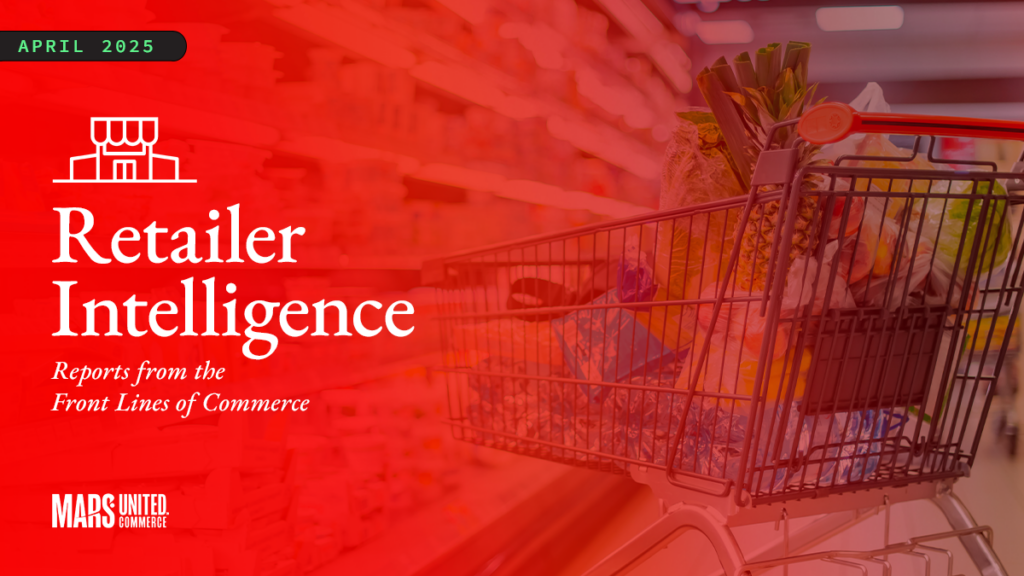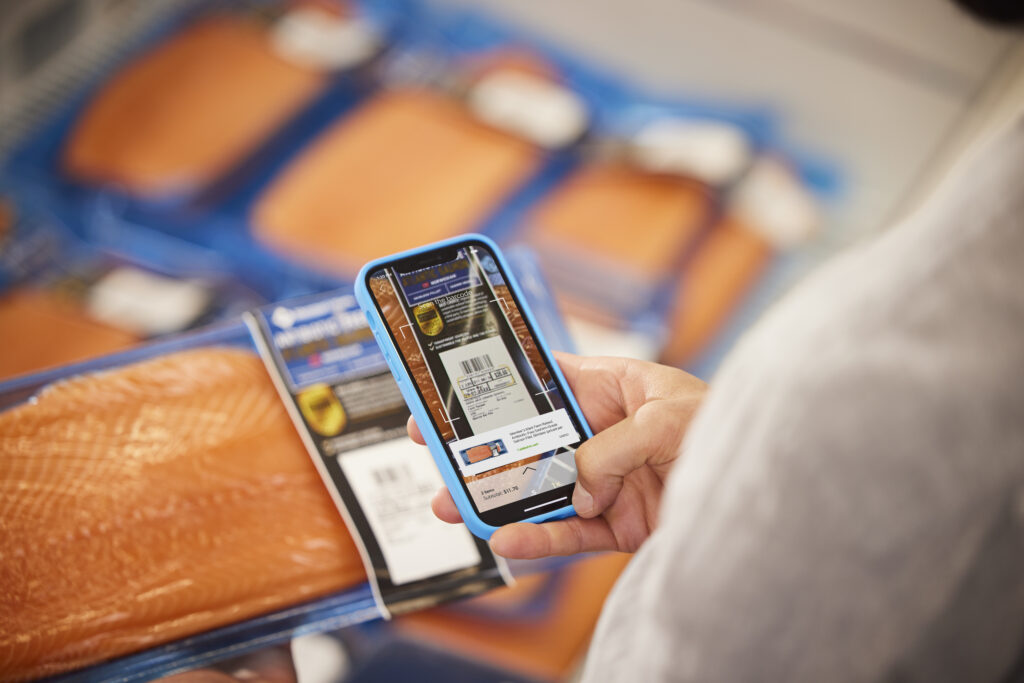By Lindsey Simcik, The Mars Agency
Kroger recently unveiled a test of KroGo shopping carts powered by Caper in a beta store outside of Cincinnati, Ohio, a move the retailer is calling “game-changing for checkout.”
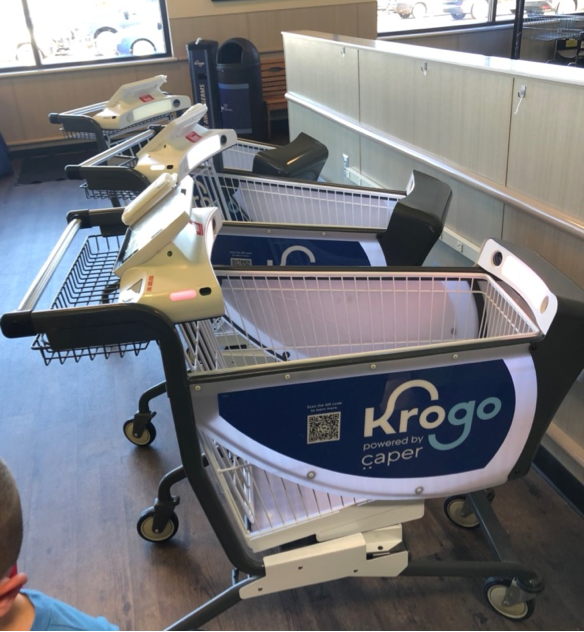
Since Amazon has been using similar technology of its own in Seattle stores, the concept is not a secret. But to see Kroger trying it out suggests these carts are almost ready for widespread use as a regular part of shopping experiences.
Since Kroger’s beta-store location is close to my house, it was only natural for my curiosity and love of e-commerce to inspire a visit there as part of my family’s errand list to pick up some items for an upcoming get-together. And I dragged the family along to go see this “Cart of the Future.”
Here’s what’s on the cart to let shoppers quickly check out:
- Built-in scale
- Cameras
- Interactive touch screen
- Payment pad
When we walked into the store, the carts were ready to go. The touch screen took us through a few prompts on how the cart works and guided us on how to enter our Kroger Plus card.
Once we started shopping, all we had to do was hold the package barcodes up to the cameras, which are located in three spots: one on each end, and another at the screen. When a barcode is successfully scanned, lights turn green to indicate that you can place the item into the cart. The product scale works just like it would at self-checkout, but weighs the item right there in your cart.
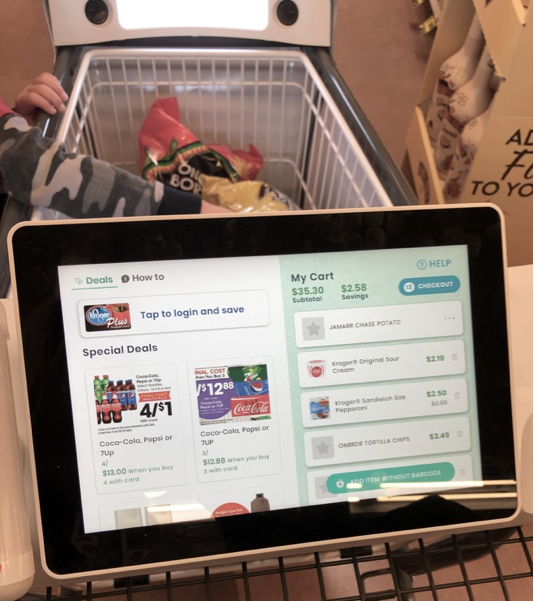
The process was so easy that my 5-year-olds were able to ring the items up for me — a big win for a mom shopping with her kids. Another plus was being able to bring your own grocery bags and packing items as you shopped (although the store did offer paper bags to use at the beginning of the trip as well).
Once we finished shopping, we simply told the cart we were ready to check out, we paid, and we were off!
At The Mars Agency, we are constantly watching the shopper experience become more connected through retailer apps and the various options for online buying. I help clients make sure their product pages on retailer websites are optimized for e-commerce conversion. We often talk about how these product pages should support larger brand-retailer initiatives so that the shopper experience is seamless. KroGo is another example of how shopper and e-commerce teams will need to continue working closely together.
As a marketer, my KroGo experience sparked some new can’t-miss opportunities to consider once shoppers have scanned your items:
- Main product image: I was shocked to see some brands on my purchase list without a product image. That’s a free brand-building opportunity in the eyes of your shopper.
- Product name: It’s well known that product names are crucial for retailer algorithms online, but now they’ll be viewed in your shopper’s cart as well.
- Promotions: Half of the touch screen showed me Kroger promotions going on at the moment. But we can only assume that there will be media opportunities in the future. How will brands be able to influence shoppers during the in-store experience?
I know marketers are excited at the thought of interacting with shoppers while they’re in a Kroger store, but the cart’s current design requires some consideration for groups who might not be able to use it:
- There is no room for the bulky items that typically go underneath a cart’s basket. So shoppers might not be buying bottled water, paper towels, etc.
- Moms of younger children probably can’t use this cart because the screens sit where the child seats normally are.
- Shoppers doing a major stock-up trip could also have issues, since the carts are noticeably smaller and could limit their purchases or make them feel like they need a larger option.
Regardless of these current drawbacks, I believe that advancements in frictionless checkout will continue improving in the coming years. Connected commerce is here, and it’s going to be a fun ride.
____________________
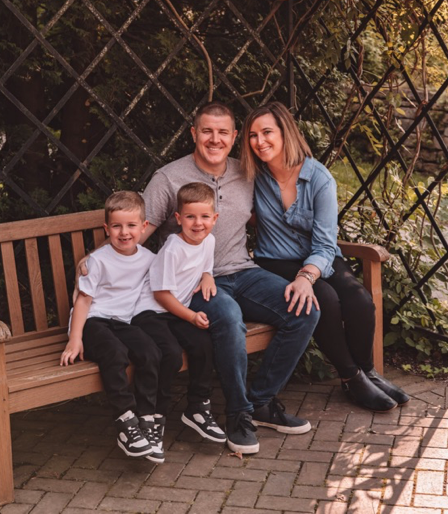
About the Author
Lindsey Simcik is a Digital Content Manager at The Mars Agency, helping clients optimize and syndicate all aspects of the digital shelf. She has spent the last seven years working with brands to help evaluate their e-commerce presence on the largest e-commerce sites.
While not trying to find new ways to boost the organic rankings of brands, you can find Lindsey at a local park with her husband, Ben, and twins Cole and Tate, creating new adventures.

